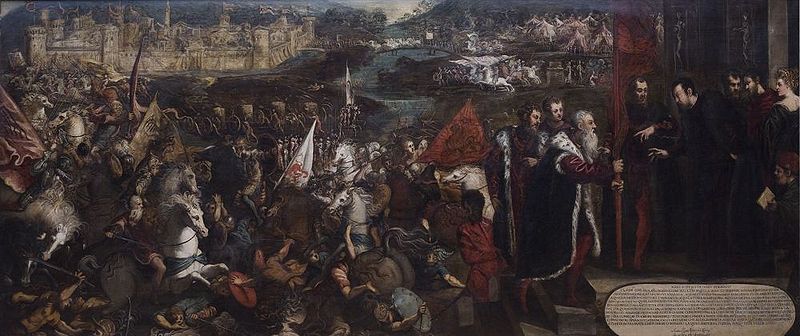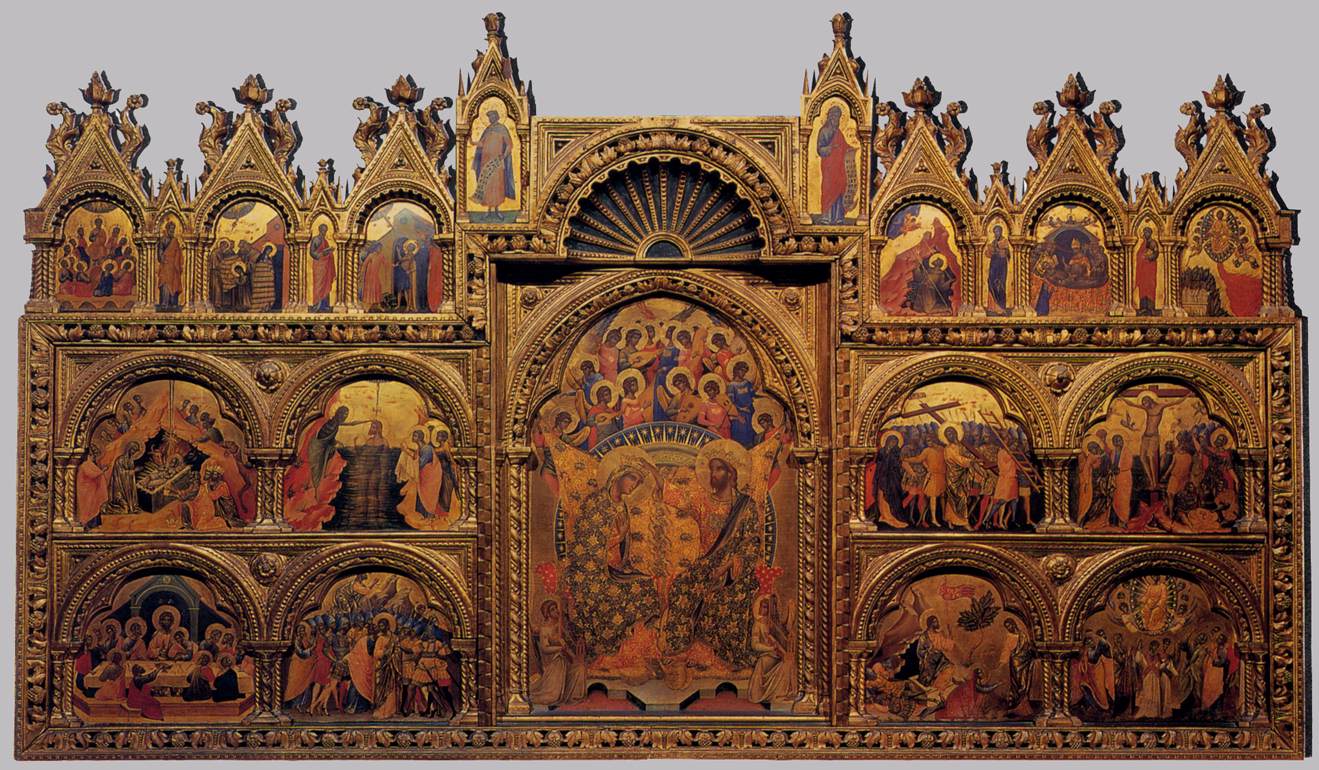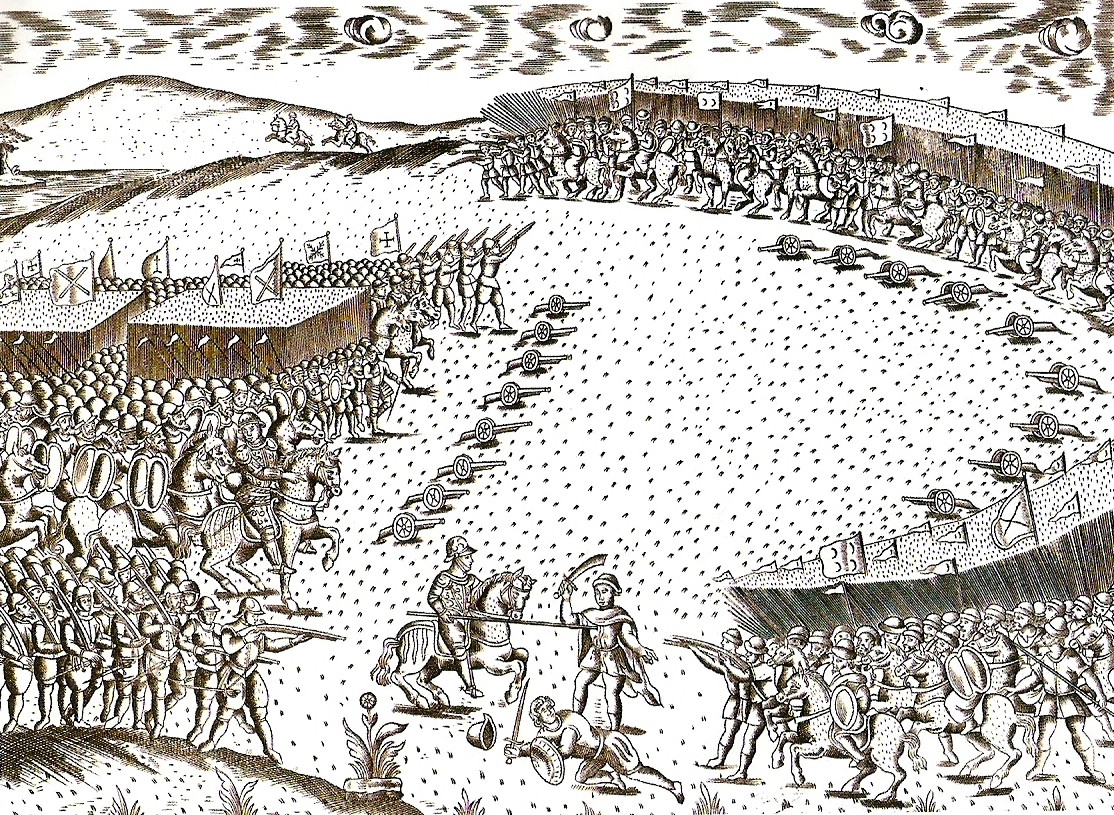|
Alonzo Rodriguez
Alonzo Rodriguez (1578 – 22 April 1648), sometimes rendered Alfonso Rodriquez was a painter largely active in Messina. He is thought to have been a follower of Caravaggio. Rodriguez' career was first recorded by Francesco Susinno in his ''Le vite de' pittori messinesi'', dated 1724. Susinno writes that he had a humanistic education; he studied history and could read Latin. Alonzo was born in Messina, the son of a Spanish Captain of Cavalry, who had three sons who were painters. His brothers Antonio and Luigi went to Palermo and Rome (or Naples) respectively, while Alonzo went to Venice. He studied Veronese, Tintoretto and Titian. He became a proficient imitator of Titian, so much so that he was accused of forgery and removed himself to Rome. From Rome he went to Naples. By 1614 he was back in Messina, where he enjoyed success, turning out paintings in the style of the Venetian School and of Caravaggio Michelangelo Merisi da Caravaggio (also Michele Angelo Merigi or Am ... [...More Info...] [...Related Items...] OR: [Wikipedia] [Google] [Baidu] |
Alonzo Rodriguez Commiato Dei Santi Pietro E Paolo Messina Museo Regionale
Alonzo is both a given name and a Spanish surname. Notable people with the name include: Given name *Alonzo de Barcena, 16th-century Spanish Jesuit missionary and linguist * Alonzo de Santa Cruz (–1567), Spanish cartographer, mapmaker, instrument maker, historian and teacher * Alonzo Addae (born 1997), Canadian football player * Alonzo Babers (b. 1961), American sprinter * Alonzo L. Best (1854–1923), American politician * Alonzo Bodden, American comedian *Alonzo Church (1903–1995), American mathematician and computer scientist * Alonzo Clemons, American autistic savant clay sculptor * Alonzo B. Coons (1841–1914), American lawyer and politician * Alonzo B. Cornell (1832–1904), a governor of New York * Alonzo Drake (1884–1919), English footballer and cricketer * Alonzo J. Edgerton (1827–1896), American politician * Alonzo Dillard Folger (1888–1941), American politician * Alonzo Gee, American basketball player * Alonzo A. Hinckley (1870–1936), American official of t ... [...More Info...] [...Related Items...] OR: [Wikipedia] [Google] [Baidu] |
Caravaggio
Michelangelo Merisi da Caravaggio (also Michele Angelo Merigi or Amerighi da Caravaggio; 29 September 1571 – 18 July 1610), known mononymously as Caravaggio, was an Italian painter active in Rome for most of his artistic life. During the final four years of his life, he moved between Kingdom of Naples, Naples, Hospitaller Malta, Malta, and Kingdom of Sicily, Sicily. His paintings have been characterized by art critics as combining a realistic observation of the human state, both physical and emotional, with a dramatic use of lighting, which had a formative influence on Baroque painting. Caravaggio employed close physical observation with a dramatic use of chiaroscuro that came to be known as tenebrism. He made the technique a dominant stylistic element, transfixing subjects in bright shafts of light and darkening shadows. Caravaggio vividly expressed crucial moments and scenes, often featuring violent struggles, torture, and death. He worked rapidly with live models, preferrin ... [...More Info...] [...Related Items...] OR: [Wikipedia] [Google] [Baidu] |
Francesco Susinno
Francesco, the Italian (and original) version of the personal name "Francis", is one of the most common given name among males in Italy. Notable persons with that name include: People with the given name Francesco * Francesco I (other), several people * Francesco Barbaro (other), several people * Francesco Bernardi (other), several people *Francesco di Giorgio Martini (1439-1501), Italian architect, engineer and painter *Francesco Zurolo (first half of the 15th century–1480), Italian feudal lord, baron and italian leader * Francesco Berni (1497–1536), Italian writer * Francesco Canova da Milano (1497–1543), Italian lutenist and composer * Francesco Primaticcio (1504–1570), Italian painter, architect, and sculptor * Francesco Albani (1578–1660), Italian painter * Francesco Borromini (1599–1667), Swiss sculptor and architect * Francesco Cavalli (1602–1676), Italian composer * Francesco Maria Grimaldi (1618–1663), Italian mathematician and ... [...More Info...] [...Related Items...] OR: [Wikipedia] [Google] [Baidu] |
Paolo Veronese
Paolo Caliari (152819 April 1588), known as Paolo Veronese ( , ; ), was an Italian Renaissance painter based in Venice, known for extremely large history paintings of religion and mythology, such as ''The Wedding at Cana (Veronese), The Wedding at Cana'' (1563) and ''The Feast in the House of Levi'' (1573). Included with Titian, a generation older, and Tintoretto, a decade senior, Veronese is one of the "great trio that dominated Venetian painting of the ''cinquecento''" and the Late Renaissance in the 16th century.Rosand, 107 Known as a supreme colorist, and after an early period with Mannerism, Paolo Veronese developed a naturalist style of painting, influenced by Titian. His most famous works are elaborate narrative cycles, executed in a dramatic and colorful style, full of majestic architectural settings and glittering pageantry. His large paintings of biblical feasts, crowded with figures, painted for the refectories of monasteries in Venice and Verona are especially famous ... [...More Info...] [...Related Items...] OR: [Wikipedia] [Google] [Baidu] |
Tintoretto
Jacopo Robusti (late September or early October 1518Bernari and de Vecchi 1970, p. 83.31 May 1594), best known as Tintoretto ( ; , ), was an Italian Renaissance painter of the Venetian school. His contemporaries both admired and criticized the speed with which he painted, and the unprecedented boldness of his brushwork. For his phenomenal energy in painting he was termed . His work is characterised by his muscular figures, dramatic gestures and bold use of perspective, in the Mannerist style. Life The years of apprenticeship Tintoretto was born in Venice in 1518. His father, Battista, was a dyer – in Italian and in Venetian; hence the son got the nickname of Tintoretto, "little dyer", or "dyer's boy". Tintoretto is known to have had at least one sibling, a brother named Domenico, although an unreliable 17th-century account says his siblings numbered 22. The family was believed to have originated from Brescia, in Lombardy, then part of the Republic of Venice. Older studi ... [...More Info...] [...Related Items...] OR: [Wikipedia] [Google] [Baidu] |
Titian
Tiziano Vecellio (; 27 August 1576), Latinized as Titianus, hence known in English as Titian ( ), was an Italian Renaissance painter, the most important artist of Renaissance Venetian painting. He was born in Pieve di Cadore, near Belluno. Titian was one of the most versatile of Italian painters, equally adept with portraits, landscape backgrounds, and mythological and religious subjects. His painting methods, particularly in the application and use of colour, exerted a profound influence not only on painters of the late Italian Renaissance, but on future generations of Art of Europe, Western artists. His career was successful from the start, and he became sought after by patrons, initially from Venice and its possessions, then joined by the north Italian princes, and finally the Habsburgs and the papacy. Along with Giorgione, he is considered a founder of the Venetian school of Italian Renaissance painting. In 1590, the painter and art theorist Giovanni Paolo Lomazzo describe ... [...More Info...] [...Related Items...] OR: [Wikipedia] [Google] [Baidu] |
Venetian School (art)
Venetian painting was a major force in Italian Renaissance painting and beyond. Beginning with the work of Giovanni Bellini (c. 1430–1516) and his brother Gentile Bellini (c. 1429–1507) and their workshops, the major artists of the Venetian school included Giorgione (c. 1477–1510), Titian (c. 1489–1576), Tintoretto (1518–1594), Paolo Veronese (1528–1588) and Jacopo Bassano (1510–1592) and his sons. Considered to give primacy to colour over line, the tradition of the Venetian school contrasted with the Mannerism prevalent in the rest of Italy. The Venetian style exerted great influence upon the subsequent development of Western painting.Gardner, p. 679. By chance, the main phases of Venetian painting fit rather neatly into the centuries. The glories of the 16th century were followed by a great fall-off in the 17th, but an unexpected revival in the 18th, when Venetian painters enjoyed great success around Europe, as Baroque painting turned to Rococo. This had ended c ... [...More Info...] [...Related Items...] OR: [Wikipedia] [Google] [Baidu] |
1578 Births
__NOTOC__ 1578 ( MDLXXVIII) was a common year starting on Wednesday in the Julian calendar. Events January–March * January 13 – The Siege of Gvozdansko ends in the Kingdom of Croatia as Ottoman Empire troops led by Ferhad Pasha Sokolović capture the fortress at Gvozdansko. * January 31 – Battle of Gembloux: Spanish forces under Don John of Austria and Alexander Farnese defeat the Dutch; Farnese begins to recover control of the French-speaking Southern Netherlands. * February 6 – Pope Gregory XIII issues the papal bull ''Illius fulti praesidio'' and creates the Diocese of Manila, the first Roman Catholic diocese in the Philippines, with Domingo de Salazar as the first Bishop of Manila. The diocese will be raised to the status of archdiocese on August 14, 1595. * February 8 – The city council of Amsterdam in the Netherlands ratifies a treaty placing the city under the authority of Willem, Prince of Orange, and joining the States of Ho ... [...More Info...] [...Related Items...] OR: [Wikipedia] [Google] [Baidu] |
1648 Deaths
The year 1648 has been suggested as possibly the last time in which the overall human population declined, coming towards the end of a broader period of global instability which included the collapse of the Ming dynasty and the Thirty Years' War, the latter of which ended in 1648 with the Peace of Westphalia. Events January–March * January 15 ** Manchu invaders of China's Fujian province capture Spanish Dominican priest Francisco Fernández de Capillas, torture him and then behead him. Capillas will be canonized more than 350 years later in 2000 in the Roman Catholic Church as one of the Martyr Saints of China. ** Alexis, Tsar of Russia, marries Maria Miloslavskaya, who later gives birth to two future tsars (Feodor III and Ivan V) as well as Princess Sophia Alekseyevna, the regent for Peter I. * January 17 – By a vote of 141 to 91, England's Long Parliament passes the Vote of No Addresses, breaking off negotiations with King Charles I, and thereb ... [...More Info...] [...Related Items...] OR: [Wikipedia] [Google] [Baidu] |







